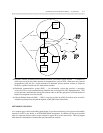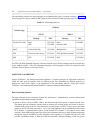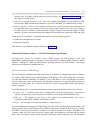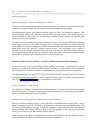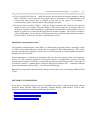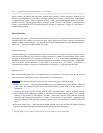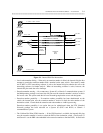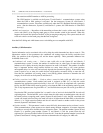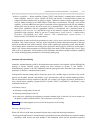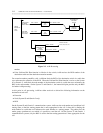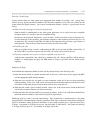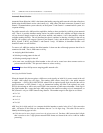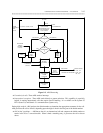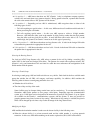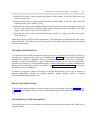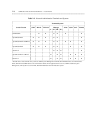COMMUNICATION SYSTEM NETWORKING — AN OVERVIEW 2-11
_ ______________________________________________________________________________________
_ ______________________________________________________________________________________
_ ______________________________________________________________________________________
• Bearer capabilities — Bearer capability (System 75 R1V3 and Generic 1 communication systems) and
bearer capability classes of service (System 85 R2V4 and Generic 2 communications system) are
assigned to indicate whether calls are analog or digital. Within the scheme of bearer capabilities, digital
calls are further classified by the DMI mode in which they are transmitted. Through a call’s bearer
capability, AAR and ARS know the types of routes that are most appropriate for the call and whether a
modem pool must be used for the call to travel over a selected facility. The switch’s ability to match
these bearer capabilities with the appropriate facilities is incorporated into a function known as
generalized route selection. It is beyond the scope of this manual to explain all the ramifications of
generalized route selection. Refer to DEFINITY Communications System Generic 2 Administration
Procedures (555-104-506) and AT&T DEFINITY 75/85 Communications System Generic 1.1
Implementation (555-204-654) for further details.
Communications systems use the above parameters to route a call as soon as the basic networking software
is enabled. They cannot, however, send any of this information with the destination extension to the next
switch in the network until AAR is enabled. When AAR is enabled, the originating switch sends the FRL
(all switches) and the conditional call routing count (System 85 and G2 only) on to the next switch when it
routes a call. Hence, these parameters are called traveling class marks (TCMs) because they "travel" along
with a call to its destination. The destination switch determines the partition number and bearer capability
of a call by identifying these parameters for the incoming trunk group.
Automatic Alternate Routing
Automatic Alternate Routing (AAR) is the feature that routes network calls when the Uniform Dialing Plan
package or Private Network Access package has been activated on System 75 and Generic 1
communications systems or the ETN (Standard Network) package has been activated on the DIMENSION,
System 85, or Generic 2 communications systems.
AAR provides alternate routing choices for private on-net calls, modifies digits so that these calls can be
routed over the public network, and matches a call’s characteristics with the available trunking facilities.
The call characteristics that it considers are the FRL (all systems), call category (System 85 and Generic 2
only), and the bearer capability (System 85 R2V4, System 75 R1V3, and Generic 1 and Generic 2 only)
associated with the call.
AAR routes a call by:
• Selecting a routing pattern for the call
• Selecting a trunk group for the call
• In some cases, modifying the telephone or extension number digits so that the call can be routed over
the public (or other) network facilities. This is known as subnet trunking.
Figure 2-2 shows what happens to an on-net call in the process of call routing.
Selecting a Routing Pattern
When calls arrive in AAR from the internal dial plan, they contain the following information:
• In System 85 and Generic 2 communications systems that have been administered for extension number
portability, AAR receives the node number of the destination switch and the destination extension



